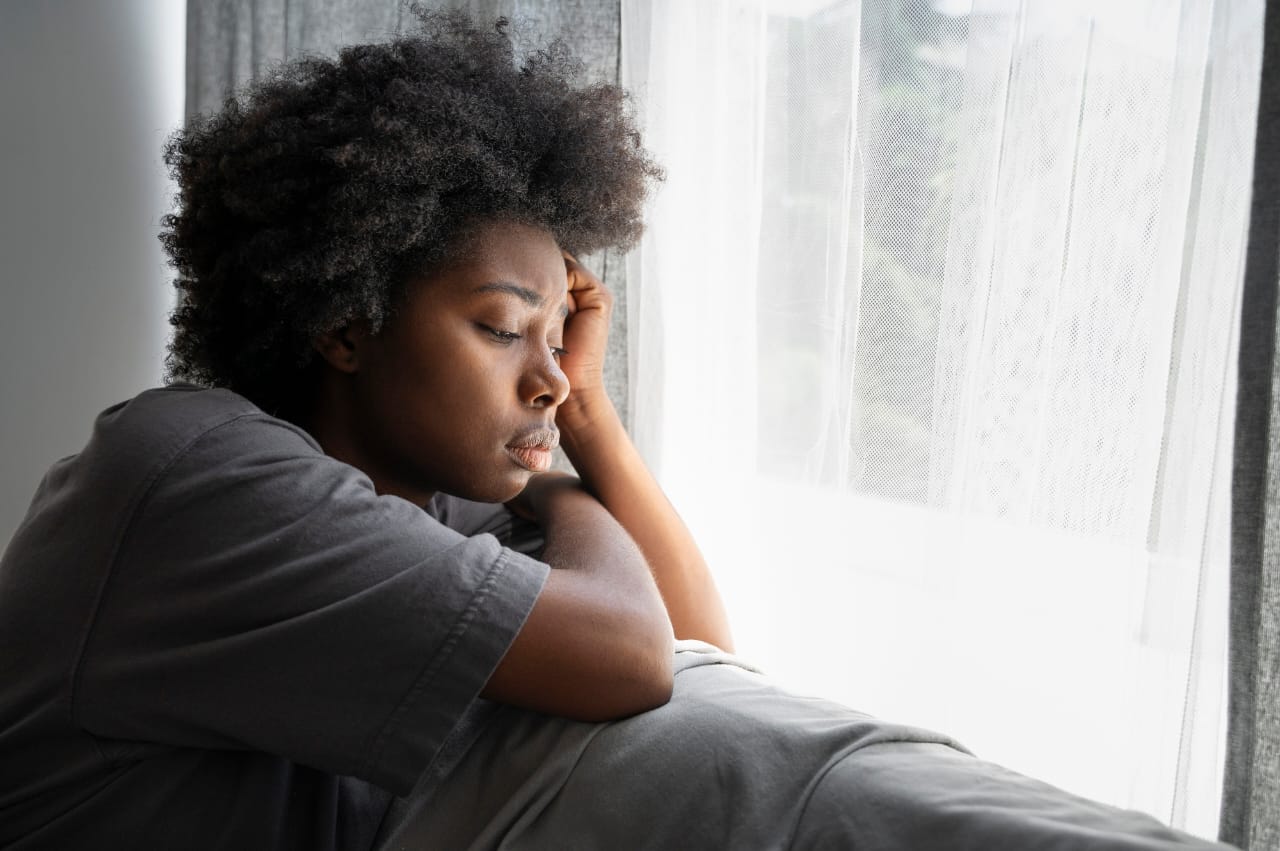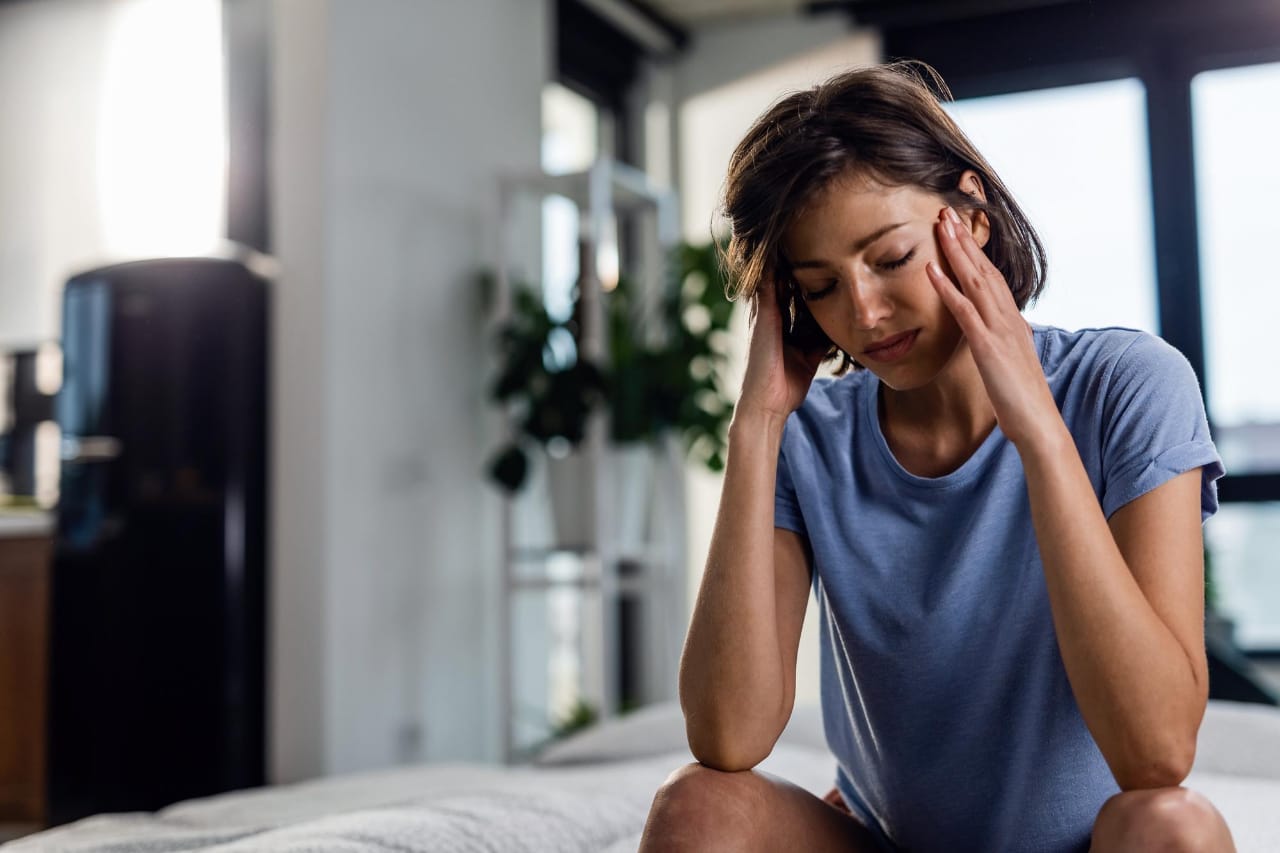No products in the cart.: R0.00

Anxiety is a natural emotion. However, it can also cause physical symptoms, such as shaking and sweating. Anxiety disorders can affect daily life and can improve with treatment.
Anxiety disorders form a category of mental health diagnoses that lead to excessive nervousness, fear, apprehension, and worry.
This article discusses the symptoms, causes, and treatments for anxiety.
The American Psychological Association (APA) defines anxiety as “an emotion characterized by feelings of tension, worried thoughts, and physical changes like increased blood pressure.”
Knowing the difference between typical feelings of anxiety and an anxiety disorder requiring medical attention can help a person identify and treat the condition.
Anxiety and anxiety disorders :
Anxiety is a complex response to real or perceived threats. It can involveTrusted Source cognitive, physical, and behavioral changes.
Real or perceived danger causes a rush of adrenaline, a hormone and chemical messenger in the brain, which in turn triggers these anxiety reactions in a process called the fight-or-flight response. Some people may experience this response in difficult social situations or around important events or decisions.
The duration or severity of feelings of anxiety can sometimes be out of proportion to the original trigger or stressor. Physical symptoms, such as increased blood pressure and nausea, may also develop. These responses move beyond anxiety into an anxiety disorder.

TYPES OF ANXIETY DISORDERS:
There are several types of anxiety disorders according to the American Psychiatric Association’s Diagnostic and Statistical Manual of Mental Disorders (DSM-5). This is the standard reference manual for diagnosing mental health conditions. Types of anxiety disorders include:
GENERALIZED ANXIETY DISORDER (GAD): This condition causes fear, worry and a constant feeling of being overwhelmed. It’s characterized by excessive, frequent and unrealistic worry about everyday things, such as job responsibilities, health or chores.
AGORAPHOBIA: This condition causes an intense fear of becoming overwhelmed or unable to escape or get help. People with agoraphobia often avoid new places and unfamiliar situations, like large, open areas or enclosed spaces, crowds and places outside of their homes.
PANIC DISORDER: This condition involves multiple unexpected panic attacks. A main feature of the condition is that the attacks usually happen without warning and aren’t due to another mental health or physical condition. Some people with panic disorder also have agoraphobia.
SPECIFIC PHOBIAS: A phobia is when something causes you to feel fear or anxiety that’s so severe it consistently and overwhelmingly disrupts your life. There are hundreds of different types of phobias, and there’s one diagnosis for almost all of them: specific phobia. Only one phobia, agoraphobia, is a distinct diagnosis.
SOCIAL ANXIETY DISORDER: This condition (formerly known as social phobia) happens when you experience intense and ongoing fear of being judged negatively and/or watched by others.
SEPARATION ANXIETY DISORDER: This condition happens when you feel excessive anxiety when you’re separated from a loved one, like a primary caregiver. While separation anxiety in babies and toddlers is a normal stage of development, separation anxiety disorder can affect children and adults.
SELECTIVE MUTISM: This condition happens when you don’t talk in certain situations because of fear or anxiety. It usually affects young children, but it can also affect adolescents and adults.
WHAT CAUSES ANXIETY DISORDERS?
Like other types of mental health conditions, researchers don’t know exactly what causes anxiety disorders. But they think a combination of factors plays a role:
CHEMICAL IMBALANCES: Several neurotransmitters and hormones play a role in anxiety, including norepinephrine, serotonin, dopamine and gamma-aminobutyric acid (GABA). Imbalances in these chemicals can contribute to an anxiety disorder.
BRAIN CHANGES: A part of your brain called the amygdala plays an important role in managing fear and anxiety. Studies show that people with anxiety disorders show increased amygdala activity in response to anxiety cues.
GENETICS: Anxiety disorders tend to run in biological families. This suggests that genetics may play a role. You may be at an increased risk of developing one if you have a first-degree relative (biological parent or sibling) with an anxiety disorder.
ENVIRONMENTAL FACTORS: Severe or long-lasting stress can change the balance of neurotransmitters that control your mood. Experiencing a lot of stress over a long period can contribute to an anxiety disorder. Experiencing a traumatic event can also trigger anxiety disorders.

How can I take care of myself if I have an anxiety disorder?
Aside from seeking professional medical help and treatment, certain strategies can help you manage an anxiety disorder and make treatment more effective. They include:
Stress management: Chronic or intense stress worsens anxiety disorders. Explore stress management techniques, like meditation, breathing exercises, mindfulness and regular exercise.
Support groups: Participating in a support group for people with anxiety — in-person or online — can provide opportunities to relate to others, share experiences and learn different coping strategies.
Education: Learning more about your condition and educating loved ones can help you and them better understand the condition and offer support.
Limiting or avoiding caffeine: Caffeine can make the physical symptoms of anxiety worse. Talk to your healthcare provider if you’re concerned about your level of caffeine consumption.
A note from Khanatural
You don’t need to live with constant worry and fear. If you notice symptoms of an anxiety disorder, talk to a healthcare provider. It’s best to get diagnosed and treated as soon as possible. Doing so can limit the problems that anxiety disorders can cause. Often, a combination of medications and counseling for anxiety can help you feel your best.




